RG-AP880-E, Wi-Fi 6E Tri-radio 7.780 Gbps Indoor Access Point
Indoor high-quality network scenarios in the higher education,
medical industry, government and commerce
Highlight Features
- Multi-scenario adaptability, providing flexible solutions to meet diverse service needs
- 5G optical port and 5G electrical port for flexible networking
- Upgraded to Wi-Fi 6E, a combined data rate of up to 7.780 Gbps
- PoE and DC power supply, flexible deployment
- Unified WIS cloud management, intelligent O&M
Specifications
| Hardware Specifications | RG-AP880-E |
| 802.11n | Four spatial streams ● Radio 1 – 2.4 GHz: 2×2 MIMO, two spatial streams ● Radio 2 – 5 GHz: 2×2 MIMO, two spatial streams Channels: ● Radio 1 – 2.4 GHz: 20 MHz and 40 MHz ● Radio 2 – 5 GHz: 20 MHz and 40 MHz Combined peak data rate: 600 Mbps ● Radio 1 – 2.4 GHz: 6.5 Mbps to 300 Mbps (MCS0 to MCS15 ) ● Radio 2 – 5 GHz: 6.5 Mbps to 300 Mbps (MCS0 to MCS15) Radio technologies: Orthogonal Frequency-Division Multiplexing (OFDM) Modulation types: BPSK, QPSK, 16-QAM, 64-QAM Packet aggregation: ● Aggregate MAC Protocol Data Unit (A-MPDU) ● Aggregate MAC Service Data Unit (A-MSDU) Dynamic Frequency Selection (DFS) Cyclic Delay/Shift Diversity (CDD/CSD) Maximum Ratio Combining (MRC) Space-Time Block Coding (STBC) Low-Density Parity Check (LDPC) Transmit beam-forming (TxBF) |
| 802.11ac | Two spatial streams ● Radio 2 – 5 GHz: 2×2 MIMO, two spatial streams Channels: ● Radio 2 – 5 GHz: 20 MHz, 40 MHz, 80 MHz, and 160 MHz Combined peak data rate: 1.733 Gbps ● Radio 2 – 5 GHz: 6.5 Mbps to 1.733 Gbps (MCS0 to MCS9) Radio technologies: Orthogonal Frequency-Division Multiplexing (OFDM) Modulation types: BPSK, QPSK, 16-QAM, 64-QAM, 256-QAM Packet aggregation: ● Aggregate MAC Protocol Data Unit (A-MPDU) ● Aggregate MAC Service Data Unit (A-MSDU) Dynamic Frequency Selection (DFS) Cyclic Delay/Shift Diversity (CDD/CSD) Maximum Ratio Combining (MRC) Space-Time Block Coding (STBC) Low-Density Parity Check (LDPC) Transmit beam-forming (TxBF) |
| 802.11ax | Eight spatial streams ● Radio 1 – 2.4 GHz: 2×2 uplink/downlink MU-MIMO, two spatial streams ● Radio 2 – 5 GHz: 2×2 uplink/downlink MU-MIMO, two spatial streams ● Radio 3 – 6 GHz: 4×4 uplink/downlink MU-MIMO, four spatial streams Channels: ● Radio 1 – 2.4 GHz: 20 MHz and 40 MHz ● Radio 2 – 5 GHz: 20 MHz, 40 MHz, 80 MHz, and 160 MHz ● Radio 3 – 6 GHz: 20 MHz, 40 MHz, 80 MHz, and 160 MHz Combined peak data rate: 7.780 Gbps: ● Radio 1 – 2.4 GHz: 8.6 Mbps to 0.574 Gbps (MCS0 to MCS11) ● Radio 2 – 5 GHz: 8.6 Mbps to 2.402 Gbps (MCS0 to MCS11) ● Radio 3 – 6 GHz: 8.6 Mbps to 4.804 Gbps (MCS0 to MCS11) Radio technologies: uplink/downlink Orthogonal Frequency-Division Multiple Access (OFDMA) Modulation types: BPSK, QPSK, 16-QAM, 64-QAM, 256-QAM, 1024-QAM Packet aggregation: ● Aggregate MAC Protocol Data Unit (A-MPDU) ● Aggregate MAC Service Data Unit (A-MSDU) Dynamic Frequency Selection (DFS) Cyclic Delay/Shift Diversity (CDD/CSD) Maximum Ratio Combining (MRC) Space-Time Block Coding (STBC) Low-Density Parity Check (LDPC) Transmit beam-forming (TxBF) WPA3 |
| Antenna | Wi-Fi ● 2.4 GHz: two built-in omnidirectional antennas, with peak antenna gain of 5.4 dBi. ● 5 GHz: two built-in omnidirectional antennas, with peak antenna gain of 5.2 dBi. ● 6 GHz: four built-in omnidirectional antennas, with peak antenna gain of 5.4 dBi. Bluetooth ● One integrated vertically polarized omnidirectional antenna, with peak antenna gain of 4.6 dBi. |
| Port | 1 x 100/1000/2.5G/5GBase-T port 1 x 5GE SFP/RJ45 combo port, compatibility with 1GE and 2.5GE modules, shared with one 100/1000/2.5G/5GBASE-T port 1 x 10/100/1000Base-T port 1 x RJ45 console port (serial console port) 1 x USB 3.0 (Type-A connector) 1 x Bluetooth 5.1 |
| Status LED | 1 x multi-color system status LED ● AP power-on status ● Software initialization status and upgrade status ● Uplink service interface status ● Wireless user online status ● CAPWAP tunnel timeout ● Specific AP locating |
| Button | 1 x Reset button ● Press the button for shorter than 2 seconds. Then the device restarts. ● Press the button for longer than 5 seconds. Then the device restores to factory settings. |
| Dimensions (W x D x H) | Main unit: 230 mm x 230 mm x 51 mm (9.06 in. x 9.06 in. x 2.01 in.) Shipping: 284 mm x 262 mm x 124 mm (11.18 in. x 10.31 in. x 4.88 in.) |
| Weight | Main unit: 1.0 kg (2.20 lbs) Mounting bracket: 0.1 kg (0.22 lbs) Shipping: 1.25 kg (2.76 lbs) |
| Mounting | Wall/Ceiling-mount (a mounting bracket is delivered with the main unit) |
| Lock option | Kensington lock and securing latch |
| Input power supply | The AP supports the following two power supply modes: ● 54 V DC/1.1 A power input over DC connector: The DC connector accepts 2.1 mm/5.5 mm center-positive circular plug. A DC power supply needs to be purchased independently. ● PoE input over LAN 1: The power source equipment (PSE) complies with IEEE 802.3af/at/bt standard (PoE/PoE+/PoE++). Note: If both DC power and PoE are available, DC power is preferred. |
| Maximum power consumption | Maximum power consumption: 40 W ● DC power: 40 W, 2.4 GHz radio 2×2, 5 GHz radio 2×2, 6 GHz radio 4×4, LAN 2 for PoE supply, and USB port enabled ● 802.3af (PoE): 12.95 W, 2.4 GHz radio 1×1, 5 GHz radio 1×1, 6 GHz radio 1×1, LAN 2 and USB port that fail to provide power for external devices (PoE out disabled of LAN 2 and USB port disabled) ● 802.3at (PoE+): 23 W, 2.4 GHz radio 2×2, 5 GHz radio 2×2, 6 GHz radio 4×4, LAN 2 and USB port that fail to provide power for external devices (PoE out disabled of LAN 2 and USB port disabled) ● 802.3bt (PoE++): 40 W, 2.4 GHz radio 2×2, 5 GHz radio 2×2, 6 GHz radio 4×4, LAN 2 for PoE supply, and USB port enabled ● Idle mode: 10.3 W |
| External power supply | When powered by 802.3bt (PoE++), the AP can supply power to an external device. ● The USB port can source 1 A/5 W power to an attached device. ● The LAN 2 port can source 48 V/12.95 W power to an IoT unit. |
| Environment | Storage temperature: –40°C to +70°C (–40°F to +158°F) Storage humidity: 5% RH to 95% RH (non-condensing) Storage altitude: –500 m to +5,000 m (–1640.42 ft. to +16,404.20 ft.) Operating temperature: –10°C to +50°C (14°F to 122°F) Operating humidity: 5% RH to 95% RH (non-condensing) Operating altitude: –500 m to +4,000 m (–1,640.42 ft. to +13,123.36 ft.) Note: At an altitude in the range of 1,800–4,000 m (5,905.51–13,123.36 ft.), every time the altitude increases by 166 m (544.62 ft.), the maximum temperature decreases by 1°C (1.8°F). |
| Mean Time Between Failure (MTBF) | 200,000 hours (22 years) at the operating temperature of 25°C (77°F) |
| System memory | 512 MB DRAM, 256 MB flash |
| Transmit power | 2.4 GHz ● Maximum transmit power: 27 dBm (500 mW) ● Minimum transmit power: 7 dBm (5.01 mW) 5 GHz ● Maximum transmit power: 30 dBm (1000 mW) ● Minimum transmit power: 6 dBm (3.98 mW) 6 GHz ● Maximum transmit power: 26 dBm (398 mW) ● Minimum transmit power: 9 dBm (7.94 mW) Note: ● Adjusting the transmit power by percentage (recommended) and in 1dBm increments. ● The transmit power is limited by local regulatory requirements. For details, see WLAN Country or Region Codes and Channel Compliance. |


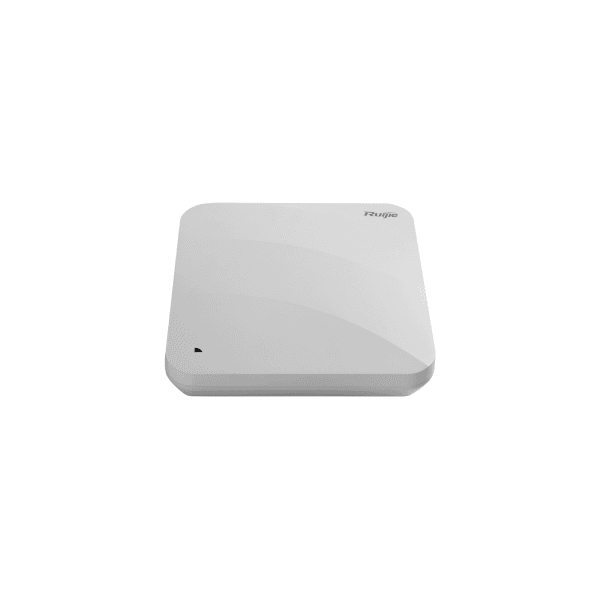
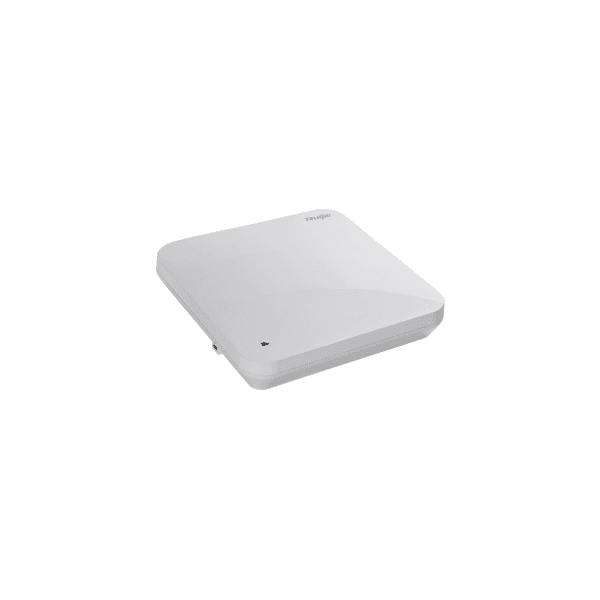
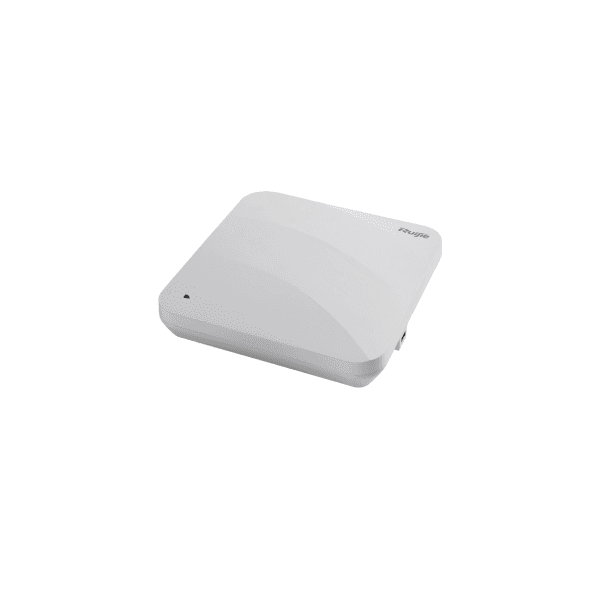

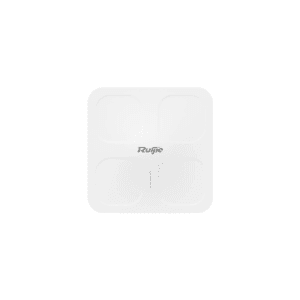


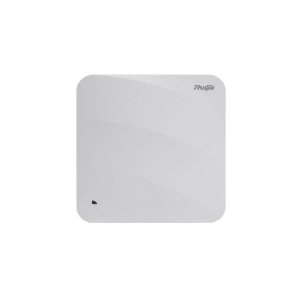
Reviews
There are no reviews yet.